Israeli Airstrikes Hit Iran-Linked Targets in Syria
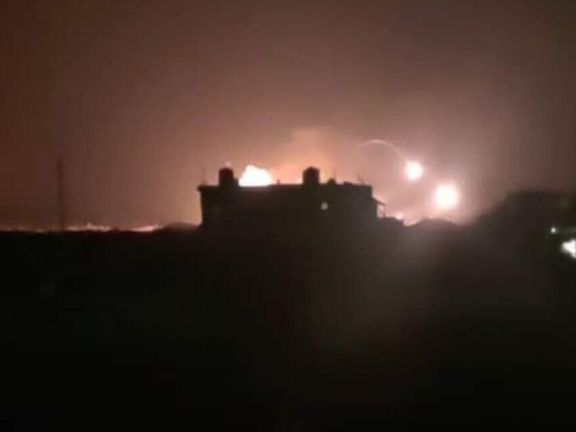
An Israeli air attack near the city of Homs hot Iranian targets early Saturday, while Syrian state media reported that some missiles were intercepted.

An Israeli air attack near the city of Homs hot Iranian targets early Saturday, while Syrian state media reported that some missiles were intercepted.
SANA, Syria's state news agency, reported that three civilians were wounded in Saturday's attack, as well as a number of fuel tanks and trucks caught fire and burned.
Meanwhile, Syrian Observatory for Human Rights, based in the United Kingdom, reported that Israeli missiles fired from warplanes destroyed a Hezbollah ammunition depot near the Homs airport.
The observatory said this was the second time Israel has targeted the site in a month.
Iran intervened in the Syrian civil war as early as 2011 to defeat a rebellion against strongman Bashar Al-Assad.
Israel has been attacking what it has described as Iran-linked targets in Syria since 2017, to prevent Islamic Republic forces getting entrenched near its northern borders and weapons reaching the Lebanese Hezbollah.
Israel attacked targets in Syria hitting two bases where Iranian forces operate in Homs province earlier this month killing at least two Iranian officers.
Syria’s defense ministry announced the attacks without providing much detail, while Western intelligence sources told Reuters the strikes hit a series of air bases in the central region of the country where Iranian forces are based.
Iran says its officers serve in an advisory role in Syria at the invitation of Damascus. Hundreds of Iranian forces and thousands of proxy militiamen including senior officers have been killed in Syria during the war.
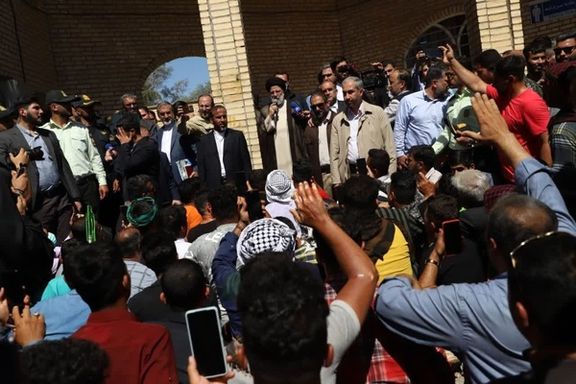
Iranian President Ebrahim Raisi's visit to the Khuzestan province was mired with a lackluster welcome at Haft-Tappeh Sugarcane complex and condemnation by mother of a child killed during protests.
Raisi, who arrived in the province on Thursday,tried to use his trip to Khuzestan as a publicity stunt but popular anger at the government's poor economic performance and repression led to a backlash.
According to media channels affiliated with the Haft-Tappeh complex, Raisi was snubbed by the workers who are among thousands who are on strikes across the country.
Strikes by Iranian energy, petrochemicals and steel workers as well as other sectors are gaining momentum with new plants joining the nationwide industrial action this week.
Strikes are nothing new for the Haft-Tappeh workers as they have staged numerous rounds of action after the privatization of the complex in 2015. Workers have been protesting for deteriorating working conditions and late payments of wages since 2017, leading to periodic weeks-long strikes in 2017, 2018, 2019 and 2020 over unfulfilled promises by officials.
Workers at the once thriving sugar mill reportedly boycotted Raisi's visit. Turnout for his reception ceremony was so low that authorities had to transfer security forces and members of Basij – a paramilitary volunteer force working under the Revolutionary Guards – from the nearby cities such as Shush to create a crowd for the president, journalist Roozbeh Bolhari cited a channel of Haft-Tappeh workers.
The efforts turned out to be ultimately in vain as the city’s officials could not gather enough people to be able to take wide angle shots from the ceremony and were forced to use closeup images at the end.
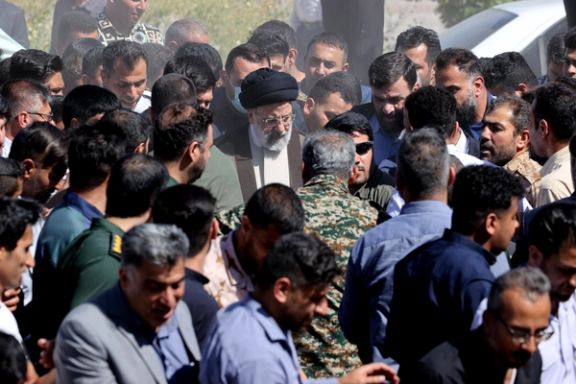
The company has at least 5,700 formal and contract staff but in the photos and videos of Raisi’s speech among the workers there are hardly more than 50 people apart from the security forces and the president’s entourage, which included more than 10 ministers of his cabinet as well as several deputies. According to the worker' social media channel, about 20 young people who were not employed in the company were lured into the crowd with promises of employment.
State media tried to portray the visit to Khuzestan as Raisi’s response to letters by the workers of the company who had called for better work conditions and salaries at par with the rising prices.
The aim of the visit was obviously propaganda as Raisi toured industrial centers in the province, telling people that he is there to see whether or not his orders given during the previous visits have been implemented. It was the seventh time that Raisi visited the province since he took office in 2021, and he said during his speeches in the provincial capital Ahvaz that “If necessary, I will travel to the province 70 times to solve its problems.”
Addressing the people of Andimeshk, he said, “Today, you people should know that despite all the sanctions and threats by the enemy, with your help, the movement towards progress and independence of the country, especially economic independence, continues.”
However, a large number of the province’s citizens criticized the visit on social media, trending a hashtag that is roughly translated as the province is thirsty for action, implying that they are fed up with propagandistic gestures.
The grievances of the people include lack of drinking water in the province, suffocating air pollution, projects that have been inaugurated but never fully implemented, and general poverty in a province that produces almost all of Iran's oil.

A large number of users sarcastically tweeted that “Mr. President, welcome to the most polluted city of the world!”
In reaction to Raisi’s visit, Zaynab Molaei-Rad, the mother of ten-year-old Kian Pirfalak, who was shot dead by plainclothesmen during protests on November 16, 2022, in one of the cities of the province, slammed the president. "This is the land of the brave. It takes a big heart to step here. Lest a vulture enter here on false pretext and promise, we will clip its wings," she said on Instagram.
The family car carrying Kian, his parents, and three-year-old brother Radin was targeted by plainclothesmen in Izeh, a town of around 100,000 in the east of the oil-rich province. Kian’s father was also seriously wounded in the shooting and is still in hospital. Authorities claim the family car was attacked by “terrorists”.

Iran's intelligence ministry said poisonous gas attacks on girls’ schools were pranks, blaming “enemies” for taking advantage of the incidents to discredit the regime.
In a statement Friday, the ministry denied any indication that poisonous substances had caused the illness of students and said samples taken from the scene of the incidents examined by “the most reliable laboratories” in the country had not yielded any suspicious materials.
The report followed months of demands by people on social media and even some newspapers for the government to tell the public what was happening to schoolgirls.
The ministry attributed the hundreds of hospitalizations to stink bombs (stinkpots) often used for creating unpleasant smells by pranksters, pepper sprays, tear gas and similar substances used by students to disrupt classes. It even mentioned spurious causes, such as gas fuel leak from vehicles and urban gas, smoke from trash burning outside schools, and mass psychogenic illness resulting from stress.
However, some of the students had to be hospitalized for up to a week due to the severeness of their symptoms but most others were released within hours. In some cases, symptoms have lasted for weeks.
It also claimed that nearly all the students hospitalized following the incidents had recovered by simple treatments such as oxygen, saline and dextrose intravenous injections, and sedatives to treat anxiety.
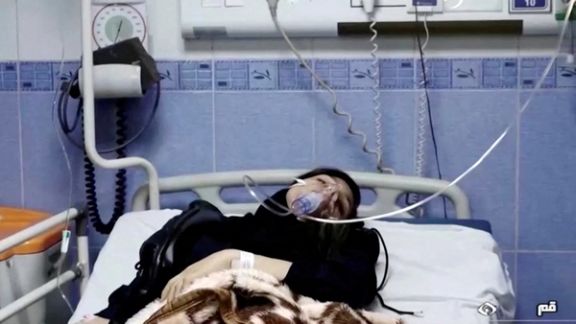
A considerable number of students had faked illness after other students in the same class or school said they were ill, and the most reported cases of illness were in the southwestern province of Khuzestan.
The poisonings started in the religious city of Qom in central Iran November 30, but the intelligence ministry claimed that the first incident had taken place in Noor, Mazandaran Province, much earlier on November 6, and spread to other provinces in late February.
Many Iranians believe that the attacks which mainly target girls’ schools were perpetrated by the regime itself or a network of extremists who wanted to scare girls and keep them away from schools and called it “state terrorism”, but the ministry denied the existence of any such network.
The ministry tried to blame social media for the incidents, saying that suspicious networks spread rumors.
Naturally, once the attacks began, thousands of people began discussing it on social media.
However, after months of incidents at schools, police have not arrested anyone, although they have made vague claims of detaining 100 suspects.
The statement accused “foreign enemies” and media outside Iran, particularly those broadcasting in Persian, of using school poisoning incidents to ignite unrest because the Mahsa protests that started in mid-September had begun to subside.
In some cases, the statement claimed, the incidents were perpetrated with “anti-security goals against the people” by those who wanted to make footage of these incidents and send them to “hostile Persian-language media” outside Iran. “Perpetrators of such cases were arrested in most cases and handed over to judicial authorities,” the ministry said.
Again, the government has produced no proof of any such arrests, as they blame any negative incident or news to foreign enemies.
These “individuals with hostile motivations”, the ministry’s statement said, were under investigation to reveal their possible connection with terrorist organizations such as the Mujahedin-e Khalq Organization (MEK).
In March, the local channel of the state television in Fars province aired the so-called ‘confessions’ of a man and his daughter arrested and accused of attacking schools with N2 gas canisters.
The police chief alleged that the accused had also made recordings of the school attacks and sent it to “hostile media including Iran International TV”. He claimed that the accused girls confessed they wanted to create an atmosphere of insecurity in schools and defame the Islamic Republic.
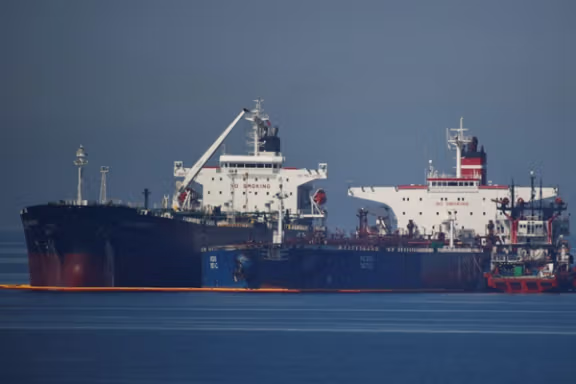
The United States says that Panama has removed 30 Iranian vessels designated by Washington from its shipping registry, and they have been re-flagged as Iranian vessels.
A State Department spokesperson told Iran International’s Samira Gharaei Friday that the US Treasury Department updated its Specially Designated Nationals and Blocked Persons List (SDN list), marking the change in the status of these vessels.
“This SDN list update reflects the strong and long-standing partnership between the United States and Panama on respect for US sanctions in the maritime context.
We routinely work with Panama and other countries to ensure that their shipping registries are not abused by entities seeking to circumvent US sanctions on Iran.
Consistent with Panama’s domestic laws and international commitments, they have de-flagged hundreds of vessels since 2019,” the spokesperson said.
The US has designated hundreds of Iranian and other individuals, companies and vessels for suspected links to Tehran’s support for terror activities or assistance in Iran’s nuclear and missile programs.
There are also US sanctions on sectors of Iran’s economy as well as weapons programs. Many have also been designated for violating these US sanctions.
In most instances, US sanctions are also third-party sanctions, meaning any individual or entity breaking the rules will be separately be designated.
“We will continue to work with partners like Panama to ensure their registries and jurisdictions are not abused by entities attempting to evade our sanctions on Iran,” the State Department said.

Saudi Arabia and Iran will open embassies in each other's capitals "within days," Iranian Foreign Minister Hossein Amir-Abdollahian said on Friday.
The two countries agreed March 10 to revive relations after years of hostility, with China’s mediation.
Speaking at a news conference in the Lebanese capital Beirut, Amir-Abdollahian did not give specific dates for the reopening of the embassies. The parties had agreed to restore full relations in two months.
The Iranian and Saudi embassies in the respective countries have been closed since 2016. The relationship started deteriorating in 2015 following the intervention of Saudi Arabia and the UAE in the Yemen war, after the Iran-aligned Houthi movement toppled the Saudi-backed government and seized control of the capital Sanaa.
Saudi Arabia accused Iran of providing weapons to the Houthis who attacked Saudi cities with armed drones and ballistic missiles. In 2019, Riyadh accused Tehran of being responsible for an attack targeting Aramco oil facilities, which resulted in stopping half of its oil production.
Iran denied those accusations.
The tension between the two regional rivals has fueled conflicts across the region, including the Syrian civil war.
"During the last phone call between the foreign ministers of Iran and Saudi Arabia on Eid al-Fitr, we agreed to work in the next coming days on the reopening of the Iranian and Saudi embassies in Tehran and Riyadh," Amir-Abdollahian said, according to the official Arabic translation.
When asked about a reported visit by Iranian President Ebrahim Raisi to Damascus, Amir-Abdollahian confirmed it, saying there was a "program" put in place for "the near future" without indicating a specific timeframe.
With reporting by Reuters

President Ebrahim Raisi is slated to travel to Damascus next week in the first visit by a head of the Iranian government to Syria in over a decade.
According to a senior regional source close to the Syrian government quoted by Reuters on Friday, a détente in ties between Riyadh and Tehran, as well as a thaw in Syria’s isolation among Arab states, have paved the way for the visit.
Since war broke out in Syria in 2011, no Iranian president has visited the country despite the Islamic Republic’s continuous military involvement and economic support to President Bashar al-Assad. Thanks to Iran and Russia, Assad was able to turn the tide of the conflict and regain control of most of his country.
The Syrian daily al-Watan, a privately owned government-aligned outlet, reported that Raisi's visit would last two days and a string of agreements, particularly on economic cooperation, would be signed during his stay.
Earlier this month, regional sources revealed that the Islamic Republic had been using the opportunity of earthquake relief to smuggle weapons and military equipment into Syriafollowing the devastating February earthquakes in Syria and Turkey. The fact that humanitarian relief is not subject to sanctions, makes it all the easier for Iran to capitalize on the catastrophe.
Syria became a key battleground between Iran and its adversaries, as Iran buttresses the threat from Israel and strengthens the Assad regime. Strikes in recent weeks by Israel have seen Iranian military figures killed from the Revolutionary Guards and Quds Force in Syria, as well as targeting weapons factories and infrastructure in Iran.